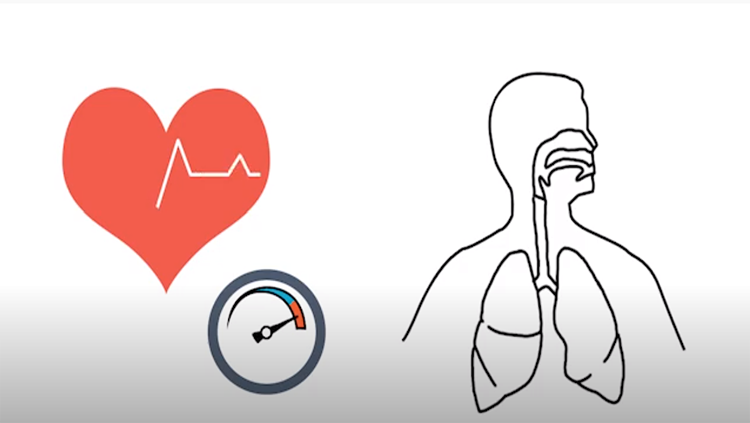Squeezing her hand over the toddler’s nose and mouth she smothered him to death because he would not stop crying. Last Monday 22-year-old Jessica Fraraccio pleaded guilty in court to felony murder of 23-month-old Elijah Nealey in the summer of 2012. No one in their right mind could conceive of committing such a horrible act, but babies are tragically killed or left severely brain damaged by shaken baby syndrome inflicted by a parent, family member, or caretaker frustrated by a child’s incessant crying. Dismissing

those with depraved minds, how can we comprehend such sad stories as this one in the Washington Post?
Jessica Fraraccio was well known to the Nealeys when they hired the young woman as a babysitter for their son Elijah and his two sisters. The Nealeys knew her parents well. Jessica is a devout Catholic who was studying child development in the hope of owning her own day care business someday.
Friends and family testified in court that Fraraccio is a kind and giving person. According to the newspaper article “She is incapable of wishing evil; in high school she wouldn’t even gossip about the girls everyone ‘hated’, one friend wrote in a letter to the court.”
Everyone is bewildered by the tragic crime. “We never would have dreamt of this,” Mike Nealey said of the young women they thought they knew. “I don’t know how to process it,” he said after hearing the shocking and remorseful admission.[i]
Now the young woman faces the prospect of 50 years in prison and the Nealeys are living with horrendous grief from the murder of their son who would have had his birthday in September. Nothing can excuse such a horrible crime, but to reduce the chances of another child suffering a similar fate, it is necessary to seek an understanding of what went wrong.
Babies and toddlers are especially vulnerable to brain damage caused by fierce shaking because of their comparatively large heads and weak supporting neck muscles. The violent whiplash caused by shaking a baby smashes the infant’s brain against the internal walls of their skull inflicting severe trauma. According to a recent study, 18-25% of babies who are hospitalized after being shaken in frustration will die (Barr 2012). 80% of children who survive are left with significant lifelong brain injuries.
The trigger is crying. It seems paradoxical that crying could trigger murdering a child on impulse.
An infant’s first act in life is to cry. This stimulates concern and provokes an urgent caregiving response in people hearing it. Neuroimaging shows that infant crying stimulates brain activity in areas involved in parenting behavior, empathy, attention, and stress. Mothers are more sensitive to the cries of their own infants than to the crying of unfamiliar infants, and neuroimaging illuminates this behavioral preference in the level of activity invoked in the mother’s brain.
The impulsive murders of crying infants are often as bewildering to the perpetrators, who are frequently otherwise devoted parents, and it is baffling to others who struggle to comprehend the horror. The perpetrators of shaken baby syndrome are most likely to be males related to the child. This is followed in frequency by boyfriends or stepfathers; then mothers, and to a lesser extent by temporary caregivers. The helpless victims are much more likely to be male than female. These statistics must provide clues to understanding how the unthinkable can happen.
The leading hypothesis for the greater number of victims who are boys is cultural. Males should not cry but females do. Thus incessant crying in a female child is more tolerated.
Adult men are more aggressive and stronger than women, so their violent actions are more powerful and deadly. Crying does evoke different responses in the male and female brain, though. Neuroimaging shows that infant hunger cries strongly interrupt “mind wandering circuits,” (the dorsal medial prefrontal and posterior cingulate) in women, whereas men tend to carry on with less interruption in thought (De Pisapia et al., 2013). Women in general show greater response to crying and laughter in brain regions processing empathy than do men (Chun et al., 2012). Cognitive control by the left auditory cerebral cortex actively inhibits activity in the right amygdala in response to laughing or crying and this reduces stress and anxiety (Tschacher et al, 2010). Rather than dismissing this violent response to a baby’s cries as psychotic behavior, Ronald Barr (2012) concludes that shaken baby syndrome is a tragic failure of otherwise normal, common interaction between infants and caregivers. According to this analysis, crying is an ambiguous signal. It can provoke positive, supportive, survival-promoting caregiving responses, as well as negative, destructive, survival-endangering caregiver responses. The onset of crying provokes a caregiving response, but if the caregiver is capable and provides “good care” the baby should cease crying. If instead the crying cannot be stopped, the caregiver may unconsciously interpret the crying as indicating that they are not capable caregivers. Thus rather than triggering a biological response to satisfy the need of an infant-- hunger or the need to change a diaper, for example--crying now signals personal criticism. These opposite responses to crying are not deliberate conscious thoughts generated in the cerebral cortex; they arise in the unconscious emotional brain.
This explanation is only a hypothesis, but the statistics indicating that family members close to the child have a greater probability of violently shaking their baby than do caregivers seem consistent with this interpretation. If this suggested explanation is true, such tragedies are cruel ironies. This analysis might account for the paradox of how someone who is apparently devoted and caring could respond tragically to incessant cries of an infant with rage instead of love.
References
Barr, R.G. (2012) Preventing abusive head trauma resulting from a failure of normal interaction between infants and their caregivers. Proc. Natl. Acad. Sci. U.S.A. 109, 17294-301.
Chun, J.W. (2012) Common and differential brain responses in men and women to nonverbal emotional vocalization s by the same and opposite sex. Nerosci. Lett. 515: 157-61.
De Pisapia, N., et al (2013) Sex differences in directional brain response to infant hunger cries. Neuroreport 24: 142-6.
Musser, E.D., et la. (2012)The neural correlates of maternal sensitivity: an fMRI study. Dev. Cogn. Neurosci 2; 428-36.
Tschacher, W., (2010) Brain connectivity in listening to affective stimuli: a functional magnetic resonance imaging (fMRI) study and implications for psychotherapy. Psychother. Res. 20:576-88.
[i] Jeremy Borden, (2013) Baby sitter guilty in Virginia toddler’s death, The Washington Post, October 21, 2013
Also In Childhood & Adolescence
Trending
Popular articles on BrainFacts.org


















